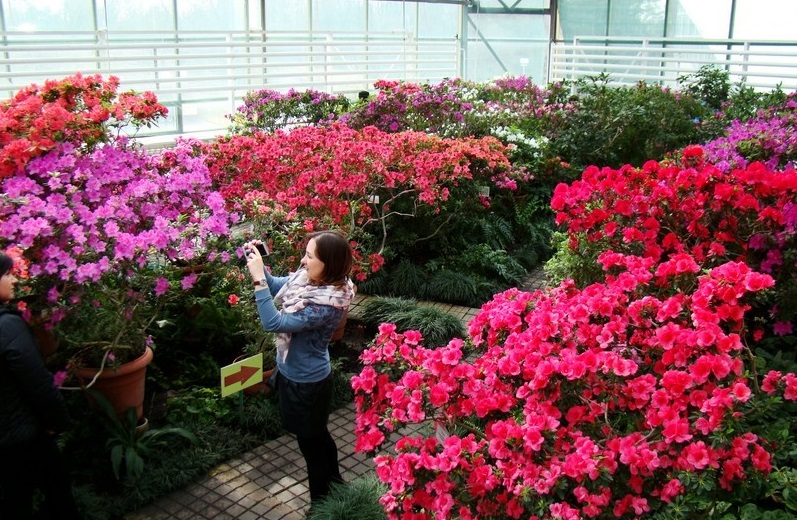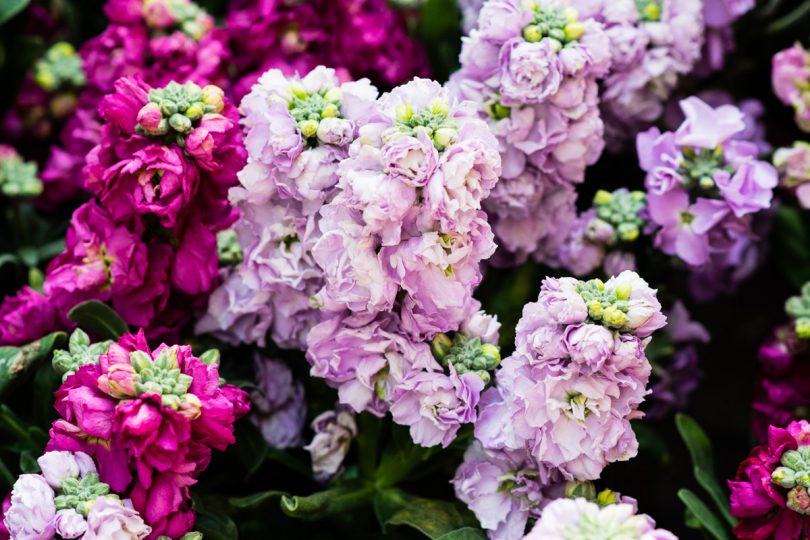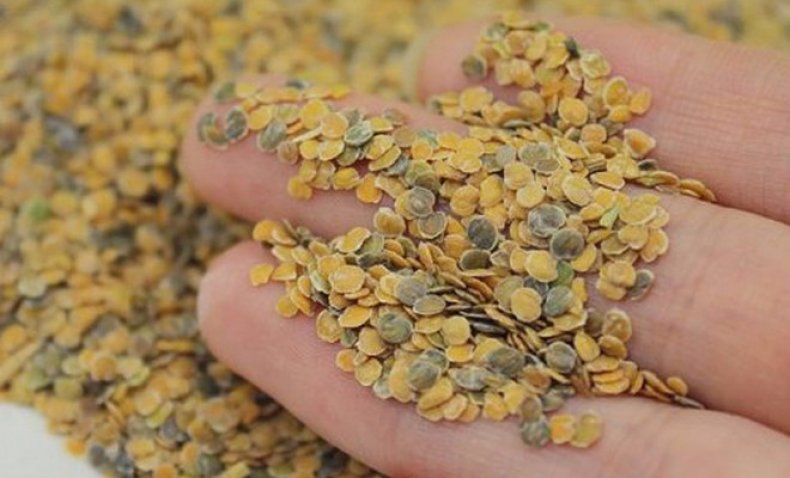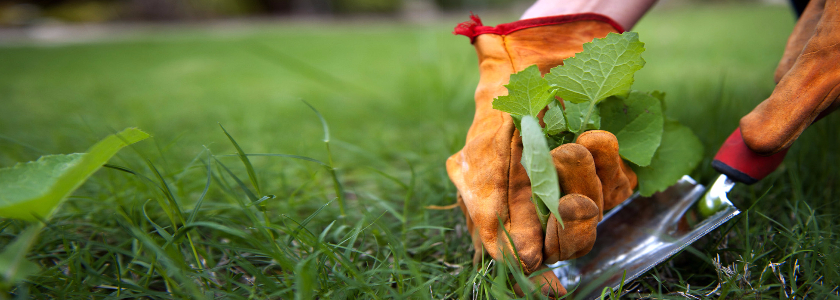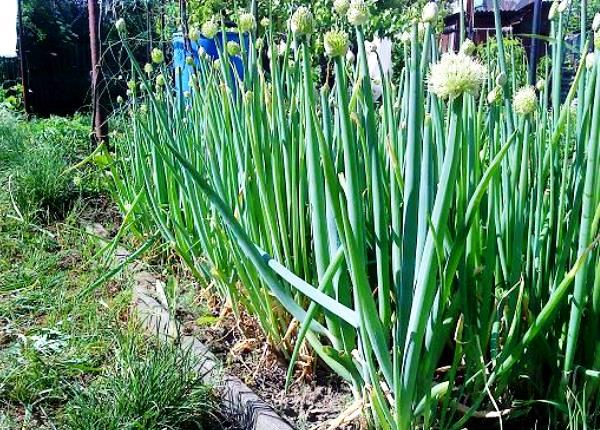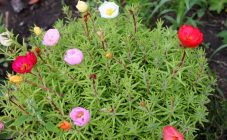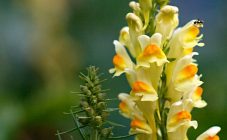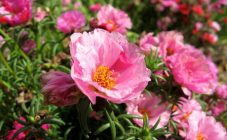Mattiola, or levkoy, is not a plant species, but a whole genus of annuals and perennials. Plants are thermophilic, grow wild in southern Europe and the Mediterranean. Grown in gardens by humans since ancient times, in nature there are more than fifty species. For its strong pleasant smell, the plant was called by the ancient Greeks white violet, from which the name was formed - levka.
The flowers were named "Mattiola" in honor of the Italian botanist Mattioli. More than half a thousand varieties have been bred by gardeners and florists. Plants of different varieties have a height of 20 centimeters to a meter. They have a magnificent sensual aroma, flowers are simple in shape and terry, collected in inflorescences-panicles of an elongated shape. The colors are very diverse, in all colors of the rainbow, from white to dark purple.
They can be grown not only in flower beds, but also on balconies, in flowerpots, pots and rabatkas. Varieties with double flowers of various colors - white, yellow, pink, red, blue, lilac, purple - will decorate any flower garden and attract attention with their delicate aroma.
Garden species of matthiola
In gardens and flower beds, amateurs and professional gardeners grow mostly two types of this plant:
- gray levkoy, or gray-haired mattiola, a flower of various shades of white, pink, purple with downy leaves of a steel-gray color, with a long flowering period, from early summer to winter;
- Mattiola is two-horned or long-petaled, it is also popularly known as the night violet mattiola, a plant with nondescript white or lilac flowers that open only at night and emit a strong heady aroma.
The most famous varieties of the night beauty are called mattiola Evening aroma and Starlight, they are planted near windows, arbors and in mixed flower beds, since the flowers do not have much decorative effect during the day, they open only in the evening. The night reveals in its entirety the charm of this marvelous plant. The flower of fragrant mattiola does not differ in any special beauty, but the aroma makes a person forget about everything in the world!
The classification of varieties of gray levkoy is very complex:
- Bouquet and Giant;
- Quedlinburg and Erfurt;
- Single-stemmed and Sprawling;
- Pyramidal and Large-flowered gigantic treelike.
Early and late blooming, as well as winter blooming in greenhouses are distinguished by flowering. In terms of aroma, it is much inferior to the night beauty, but it takes on its lush and abundant flowering and bright color. The early varieties bloom two months after germination, the later ones will please with flowering closer to autumn in 2.5-3 months.
Many varieties have been bred with double flowers, magnificent in cut, white mattiola looks great in a bride's bouquet, lilac, yellow or red mattiola will delight the birthday boy.
Tall varieties with one stem, such as Gloria, Columbus, Sensation, are planted in the background of flower beds and flower beds.
Low-growing ones are planted in the foreground or as a border - Lapis Lazuli, Tango, Swing.
Dwarf ones feel great in balcony plantings - Thumbelina, Vintage, Intuition.
Low-growing levkoi will decorate with their flowering an alpine hill or rockery, if they are planted at the foot, since the plants do not tolerate drying out of the soil.
Also, summer levkoi are used for early forcing in a greenhouse, for obtaining cutting material for decorating bouquets.
Agricultural technology and plant protection
Growing matthiola is easy, even a novice florist can handle it. The place should be sunny and protected from cold winds, the soil should be light, with good water absorption, not acidic. The structure of the soil for levkoy does not matter much.
Growing from matthiola seeds Evening aroma is possible by sowing directly in place in April-May, depending on the region.
Seeds can be harvested by yourself from dead plants. Growing through seedlings is not practiced, the plant does not take root well after transplanting. The seeds are sown directly to a permanent place, after the emergence of shoots they are thinned out, the night violet easily withstands frosts down to -5 degrees, blooms one and a half to two months after planting.
Two-horned matthiola is a cold-resistant analogue of thermophilic lavender and perfectly replaces it in the garden.
Gray-haired Mattiola, or the well-known levkoy, is grown not only by seeds, but also through seedlings. Sowing for seedlings is carried out in the second half of March or at the very beginning of April:
- The soil for sowing should be light, but not oily, as seedlings are prone to black leg disease. For prevention, it is convenient to use fungicides for soil spillage.
- Sowing is carried out in shallow grooves, the box is covered with a film, placed in a warm and bright place for the seeds to ripen.
- After the seedlings get a little stronger, the seedlings are picked into separate cups. The picking should be done in the phase of cotyledon leaves; older seedlings take root very poorly.
- Seedlings require moderate watering and hardening, ventilation, in which case it becomes resistant to frost up to -3 degrees and it can be planted in May in a permanent place.
You need to feed with levka three times during the growing season:
- 10 days after planting the seedlings in a permanent place, add an aqueous solution of a tablespoon of nitroammophoska per square meter;
- during the formation of flower arrows, a second feeding is made - a teaspoon of nitroammophoska and urea per square meter;
- the last top dressing during the flowering period - a teaspoon of superphosphate, potassium fertilizer and urea.
Caring for adult plants consists in periodically removing weeds, loosening, watering and feeding with balanced complex fertilizers.
Since the plant belongs to the cabbage family, it may be damaged by a flea, at the first sign it is necessary to treat it with an insecticide.
Levkoi reproduce by seeds, but varieties with double flowers do not give seeds, so they will have to be bought every year. Matthiola seeds are sold in flower and garden shops, can be ordered by mail, variety descriptions can be found in various catalogs and on seed packaging.
The most famous and popular terry levkoi in our country are mattiola Aida and Deborah, suitable for the climate of the middle zone.
To prolong the life of a bouquet in a vase, mattiols are dug out together with the root, the roots are thoroughly washed from the soil under running water and placed in a vase of water.Such a bouquet will delight the owners with its beauty for up to two weeks.

